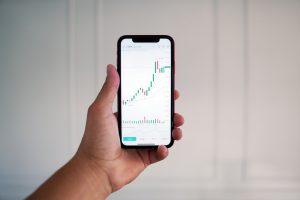Forex trading is a popular investment option for investors who are looking to make profits from fluctuations in currency prices. However, it is a risky investment as the currency market is volatile and unpredictable. In Forex trading, a stop loss order is an essential tool that helps investors limit their losses and protect their investments. But how does a stop loss affect margins?
Before we dive into the impact of stop loss orders on margins, let’s define some terms. Margins refer to the amount of money that an investor needs to put up to open a position in the Forex market. Forex brokers require their clients to put up a certain percentage of the total trade size as collateral. This collateral is known as margin.
Stop loss is an order that a trader places with their broker to sell a currency pair when the price of the pair reaches a certain level. The purpose of a stop loss order is to limit the losses that a trader may incur if the price of a currency pair moves against their position.
Now, let’s take an example to understand how stop loss orders affect margins. Suppose an investor wants to buy EUR/USD at 1.2000 with a margin requirement of 1%. This means that the investor needs to put up $1,000 in collateral to open a position of $100,000.
If the investor places a stop loss order at 1.1950, it means that if the price of the EUR/USD falls to 1.1950, the broker will automatically sell the currency pair, limiting the investor’s losses. In this case, the stop loss order is 50 pips away from the entry price of 1.2000.
Now, let’s assume that the price of the EUR/USD falls to 1.1950, triggering the stop loss order. The investor incurs a loss of 50 pips or $500. However, the margin requirement remains the same, i.e., $1,000. The broker will deduct the loss from the investor’s account, leaving them with a balance of $500.
In this case, the margin level has fallen to 50%, which is below the broker’s margin requirement of 100%. If the margin level falls below the broker’s requirement, the broker may issue a margin call, asking the investor to deposit additional funds to maintain the required margin level. If the investor fails to deposit additional funds, the broker may close their position to limit their losses.
In summary, a stop loss order can affect margins in two ways. Firstly, if the stop loss order is triggered, it may result in a loss that reduces the investor’s account balance, which in turn affects the margin level. Secondly, if the margin level falls below the broker’s requirement, the broker may issue a margin call, which can lead to the closure of the investor’s position.
To avoid margin calls and protect their investments, traders should always use stop loss orders and maintain adequate margin levels. They should also be aware of the risks involved in Forex trading and use risk management tools like stop loss orders to protect their investments.
In conclusion, stop loss orders are an essential tool in Forex trading that helps investors limit their losses and protect their investments. However, traders should be aware of the impact of stop loss orders on margins and use them wisely to avoid margin calls and protect their investments.






